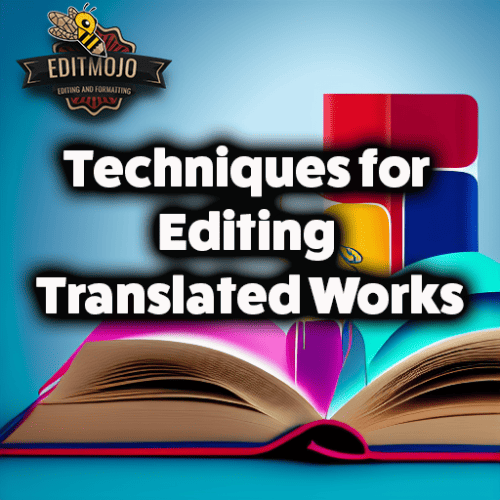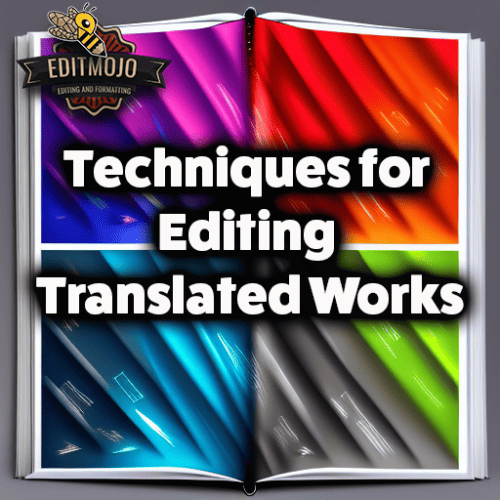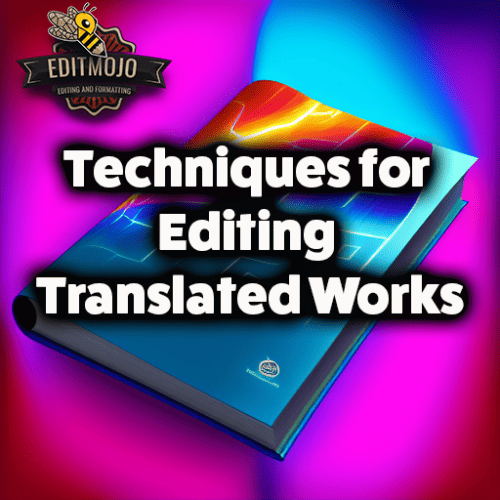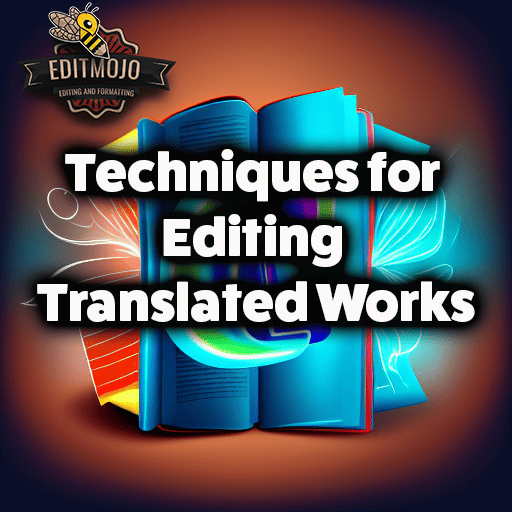Techniques for editing translated works
Techniques for editing translated works. In our increasingly globalized world, the art of translation has never been more important. When we read translated works, we expect them to carry the same flavor, message, and impact as the original text. Yet, it is the invisible hand of the editor that ensures these expectations are met. This article is for everyone seeking an in-depth understanding of the techniques and artistry involved in editing translated works.
Imagine you’re at an art museum admiring a Monet painting—an expert reproduction. The painter not only needed the technical skill to mimic Monet’s style but also the artistic sensibility to evoke the same feeling. In essence, this is the role of an editor in the translation process, acting as the bridge between two languages, cultures, and ultimately, worlds.
Key Takeaways Table
| Topic | Key Takeaways |
|---|---|
| Landscape of Translation Editing | Translation editing involves various levels: structural, stylistic, copyediting, and proofreading. It’s a nuanced process that requires an in-depth understanding of both the source and target languages. |
| Prerequisites for Editing Translated Works | Editing requires familiarity with both the source and target languages, understanding of cultural nuances, knowledge of the subject matter, and effective communication skills. |
| Techniques for Editing Translated Works | Techniques include understanding the source text, ensuring cultural and linguistic accuracy, maintaining the author’s style and tone, implementing structural correctness, and fact-checking. |
| Technology in Translation Editing | Technology, such as Computer-Assisted Translation (CAT) tools, machine translation, and terminology management tools, is important in the translation editing process, although it doesn’t replace the human touch. |
| Ethical Considerations | Editors must balance maintaining the integrity of the original text while adapting it for the target audience. This carries a significant ethical responsibility. |
| Tips and Advice | Continuous learning, good collaboration with translators, and a solid grasp of both languages are crucial for becoming a successful translation editor. |
II. The Landscape of Translation Editing
The world of translation is a vast and nuanced one. At its heart lies the interconnected relationship between the translator and the editor, each with a deep understanding of both the source and target languages. This relationship is akin to a dance, requiring coordination and mutual respect to maintain the integrity of the original text while ensuring it’s accessible and engaging to the target audience.
There are different levels of editing, each playing a distinct role. Structural editing involves reviewing the translated work’s organization and content. Stylistic editing aims at achieving a clear and engaging style, while copyediting focuses on grammar, punctuation, and consistency. Finally, proofreading is the last line of defense against any lingering errors.

III. Prerequisites for Editing Translated Works
Editing translated works is an exercise that requires more than just a keen eye for details—it necessitates a deep understanding of both the source and target languages, cultural contexts, the subject matter, and effective communication.
A common saying in the industry goes: “An editor should know a little about a lot.” It’s this broad knowledge base that allows them to ensure accuracy across a wide variety of topics.
IV. Techniques for Editing Translated Works
A. Reading and Understanding the Source Text
Being fluent in both the source and target language is not enough. An editor must immerse themselves in the source text, understanding its nuances and the author’s intentions. This process of immersion is like detective work, with the editor piecing together the clues the author has left behind.
B. Ensuring Cultural and Linguistic Accuracy
Culture and language are inextricably linked, each informing and shaping the other. The art of editing translated works lies in navigating these cultural nuances, ensuring that idiomatic expressions, metaphors, and colloquialisms are accurately represented in the target language. This process sometimes requires transcreation, where the editor creates new content that carries the same message but suits the target culture better.
C. Maintaining Style and Tone
Every author has a unique voice—a specific tone and style that makes their work distinct. An editor must ensure that this voice remains consistent throughout the translated work. This is not dissimilar to a musician covering a song. They must respect the original melody while adding their unique flair.
D. Implementing Structural and Syntactical Correctness
Coherence and cohesion in the translated text are key. As an editor, it’s your job to identify and correct ‘translationese’, a term used to describe awkward, translated language that doesn’t flow naturally. It’s like replacing a square cog in a machine with a round one—it might fit, but it won’t run smoothly.

E. Fact-check ing and Error Correction
Fact-checking is paramount in translated works. An incorrect translation could alter a historical fact, misrepresent a scientific concept, or even cause offense. Just as a builder double-checks their measurements, an editor must ensure every detail is correct.
V. Technology in Translation Editing
In the digital age, we have several tools at our disposal. From Computer-Assisted Translation (CAT) tools, to machine translation, and terminology management tools, technology has revolutionized translation editing. However, while AI is advancing rapidly, it is not yet a substitute for the human touch, nuance, and intuition in translation editing.
VI. Case Studies: Success and Failure in Editing Translated Works
Consider the wildly successful English translation of Haruki Murakami’s Norwegian Wood. Translator Jay Rubin and his editor skillfully conveyed Murakami’s distinctive style and tone, earning widespread acclaim.
In contrast, early translations of Gabriel Garcia Marquez’s works were criticized for losing the author’s rich narrative style. It was not until Gregory Rabassa took over as translator—and had his work rigorously edited—that Marquez’s true voice began to shine through in English.
These examples underline the critical role of editing in the translation process.
VII. Ethical Considerations in Editing Translated Works
Editing translated works is a delicate balancing act. It involves maintaining the original text’s integrity while adapting it to suit the target audience. As such, editors carry a significant responsibility towards both the source and target texts.
VIII. Tips and Advice for Aspiring Translation Editors
Just as every artist hones their craft, so must a translation editor. Continuous learning, good collaboration with translators, and a solid grasp of both languages are crucial. It’s a rewarding field, bridging the gap between cultures and allowing stories to be shared globally.
IX. Conclusion (Techniques for Editing Translated Works)
Editing translated works is an intricate dance between languages, cultures, and ideas. As an editor, you’re a conduit, bringing foreign narratives to new audiences. While it comes with its share of challenges, it’s a profoundly rewarding experience.

X. References (Techniques for Editing Translated Works)
For more on this topic, consider exploring The Craft of Translation, Translation as a Profession, and The Subversive Scribe: Translating Latin American Fiction.
In this globalized age, the role of translators and editors has never been more crucial. Let’s continue to learn, evolve, and celebrate the diversity of our shared narratives.
Top Five Questions and Answers Table
| Questions | Answers |
|---|---|
| What is the role of an editor in translated works? | The editor acts as a bridge between two languages, ensuring the translated work carries the same flavor, message, and impact as the original text. |
| What are the different levels of editing? | There are four main levels: structural (reviewing the organization and content), stylistic (ensuring a clear and engaging style), copyediting (checking grammar, punctuation, and consistency), and proofreading (catching any remaining errors). |
| What does cultural and linguistic accuracy entail? | It involves navigating the cultural nuances and idioms of the source language, ensuring they are accurately represented in the target language. Sometimes, this requires transcreation, where the editor creates new content that suits the target culture better. |
| How important is technology in translation editing? | Technology is crucial for improving efficiency and accuracy. However, while tools like CAT, machine translation, and terminology management tools are useful, they do not replace the need for human nuance and intuition in translation editing. |
| What are the ethical considerations in editing translated works? | Editors need to balance maintaining the integrity of the original text while adapting it to suit the target audience. This involves ensuring that the author’s voice and intent are preserved in the translated work. |
